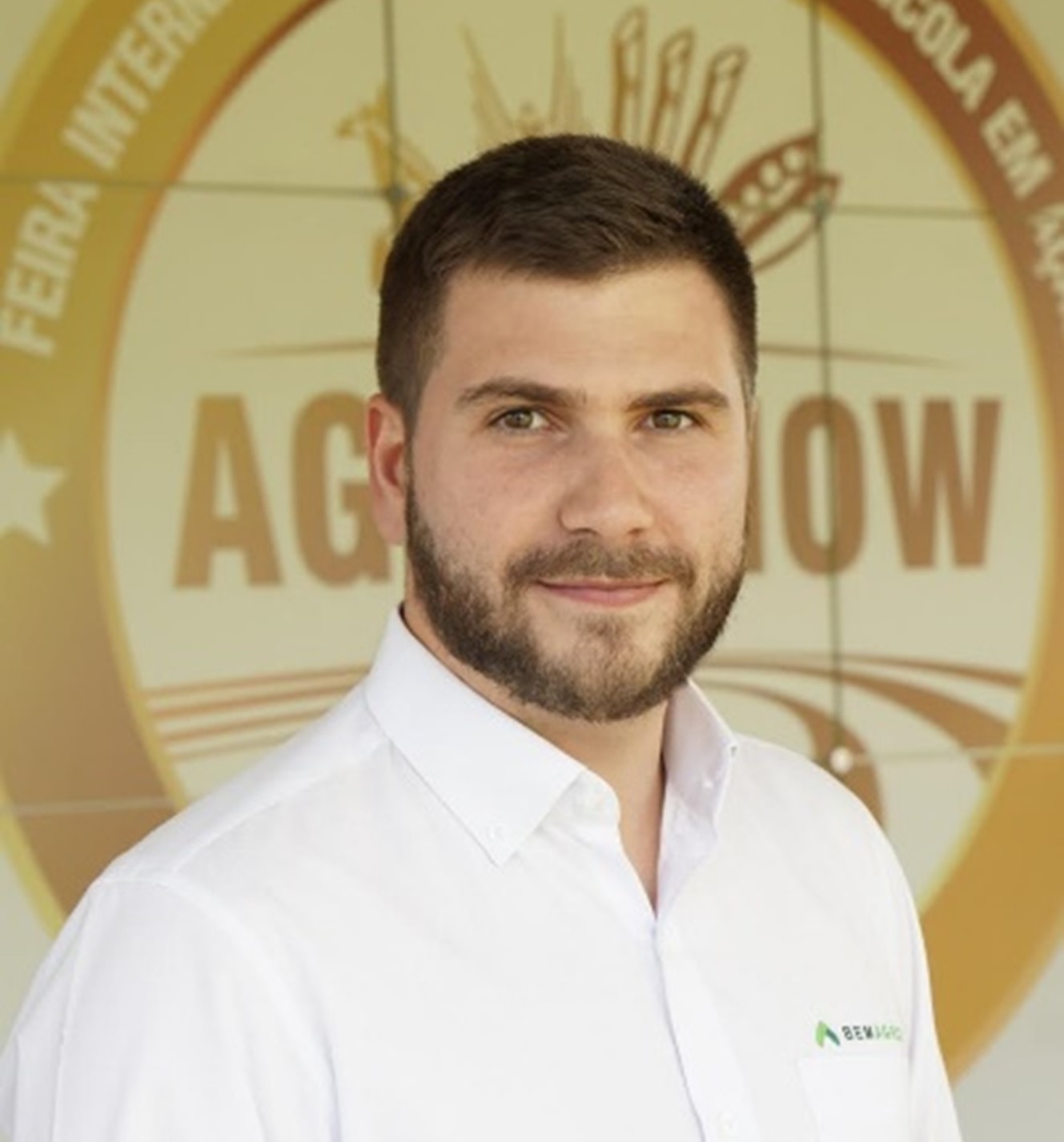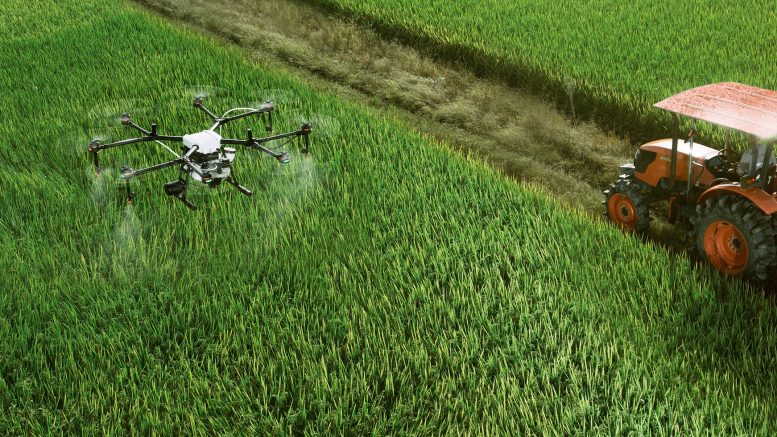“…it is possible to generate large-scale information throughout the entire production cycle, generating agronomic analyzes and reports…”
Johann Coelho is a founding partner of BemAgro, a Brazilian image processing and agronomic reporting company, founded in 2017. Coelho has a degree in business economics and controllership from the University of São Paulo.

Johann Coelho, founding partner of BemAgro
AgriBrasilis – How far can the use and technology of drones reach?
Johann Coelho – The use of drones in agriculture has gained great relevance in recent years. Drones can be used to map crops, from planning, management and monitoring of farms.
The adoption of spraying drones has also been growing, allowing for more efficient, economical and sustainable control. With the continuous advancement of technology, it is expected that drones in agriculture can reach even higher levels, helping to identify pests and diseases, nutritional deficiencies and offering more power for decision making.
The ease and democratization of operations, the expansion of flight autonomy for data collection and the emergence of new sensors can provide significant improvements in the productive potential, cost reduction and also provide for a more sustainable crop.
AgriBrasilis – What does Bem Agro do? What types of reports and projects does the company offer?
Johann Coelho – Along the farmer’s journey, there are many challenges inside and outside the farms. BemAgro assists the farmers throughout the entire production cycle in the main crops: soybean, corn, sugarcane, cotton and perennial crops, acting in the planning, management and monitoring of farms.
Through data and images captured by drones, satellites and vectors of agricultural machinery, we generate agronomic reports, such as: systematization of areas for the implementation of contour lines, planting and spraying lines, aiming at a greater number of linear meters planted, less operating time (operational efficiency), detection of planting failures, detection of weed infestations for localized applications, among other solutions, that help farmers to reduce costs and increase yields.
AgriBrasilis – What are the impacts of these reports on the reduction of costs and productivity for farmers?
Johann Coelho – Agronomic reports and information generated by our platform provide cost reduction through the rational application of inputs, reduction of diesel expenses and of the idleness of machines and labor.
Proper planning of planting/sowing allows for an increase in planted linear meters, increasing plant population and productive potential. Maps of planting failures help the farmer in the introduction of seedlings, in the correction of failures, increasing the productive potential, longevity of the crops, etc.
AgriBrasilis – How is artificial intelligence used in the company’s activities?
Johann Coelho – Artificial intelligence is a fundamental tool for BemAgro’s activities. AI generates all agronomic reports delivered by our platform. Through its applications, it is possible to generate large-scale information throughout the entire production cycle, generating agronomic analyzes and reports with speed, repeatability and standardization in deliveries.
In agriculture, decisions need to be taken very quickly, assertively and dynamically. In this way, artificial intelligence is and will be increasingly present in the decisions of farmers and agronomists.
AgriBrasilis – What are the differences between mapping and spraying drones? Which ones are most used in Brazilian agriculture and why?
Johann Coelho – Mapping and spraying drones have different purposes and are complementary technologies in agriculture.
Mapping drones are equipped with cameras and sensors to collect data to guide decisions, used to monitor crop growth, identify problem areas and generate actionable information.
Spraying drones are used to apply inputs. They are able to spray specific areas in a targeted manner, reducing waste, trampling of plants, diesel costs and exposure to chemicals.
In Brazilian agriculture, both mapping and spraying drones are being widely used. Mapping drones have been used more widely for some time, but recently spraying drones have gained more space.
AgriBrasilis – How do you see the legislation on drones and agricultural aviation in Brazil? Should drones be subject to the same rules as manned aircrafts?
Johann Coelho – Drone legislation is evolving positively. We have seen important advances over the last few years.
Because of the significant differences between drones and manned aircraft in terms of size, weight, speed and operational characteristics, I think that separate and more flexible regulation can be and already is appropriate for drones. This approach allows for greater openness to innovation in the use of drones in agriculture and other industries.
In the case of agricultural aviation, it is possible that there are specific regulations for the use of drones in this context, considering the needs and peculiarities of agriculture, such as the use of inputs and because they are in more remote areas. These regulations can be formulated to ensure the safety of agricultural operations and environmental protection, without necessarily restricting or bureaucratizing access to technologies.
The issue of drones being subject to the same regulations as manned aircraft is an ongoing debate, and different approaches can be adopted based on the characteristics, risks and needs related to their various applications.
AgriBrasilis – What are the trends in precision agriculture? What has changed in recent years?
Johann Coelho – Precision agriculture is undergoing constant transformations. Digitization has been gaining ground and taking different forms of proportion, importance and size.
The concept of precision agriculture – mostly focused on the use of machinery, soil management, variable rate applications – aligned with digitalization, brought to light the movement of agriculture 4.0 or digital agriculture. These terms are used to describe the adoption of digital technologies in agriculture, such as sensors, drones, satellite images, artificial intelligence and automation, that seek to increase operational efficiency, reduce costs and increase agricultural productivity.
READ MORE:

